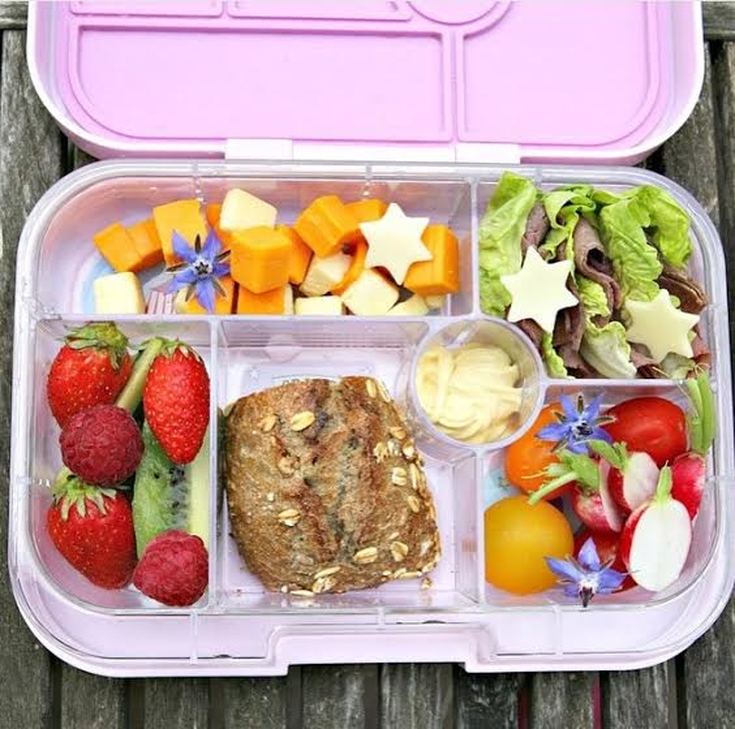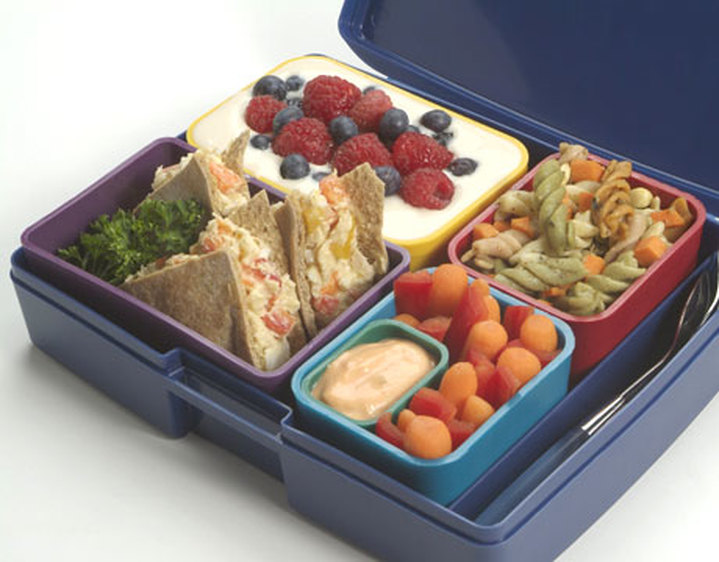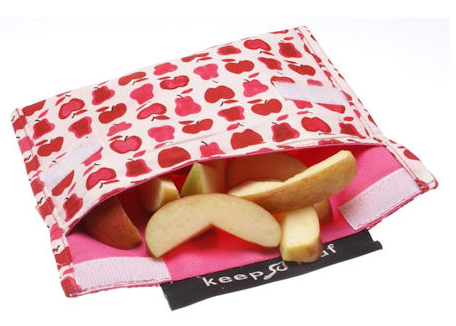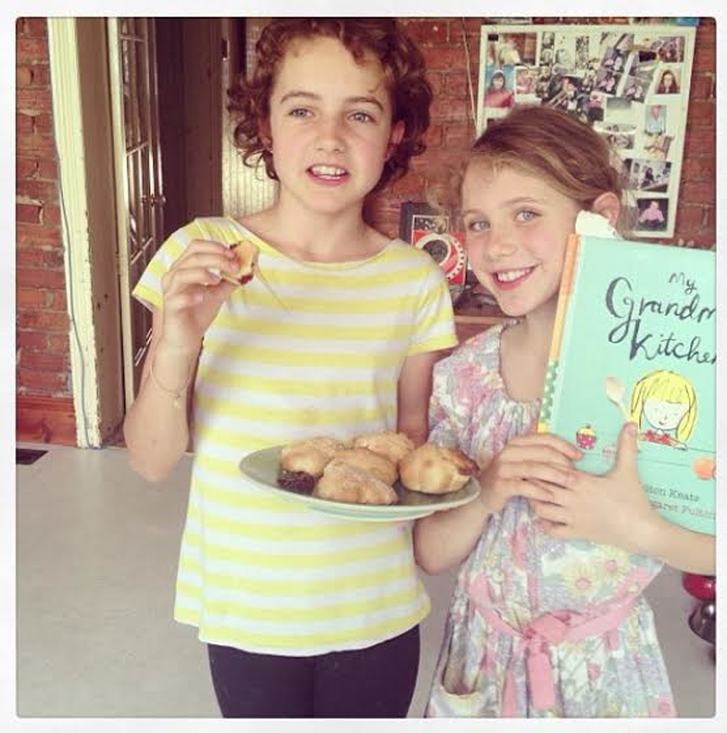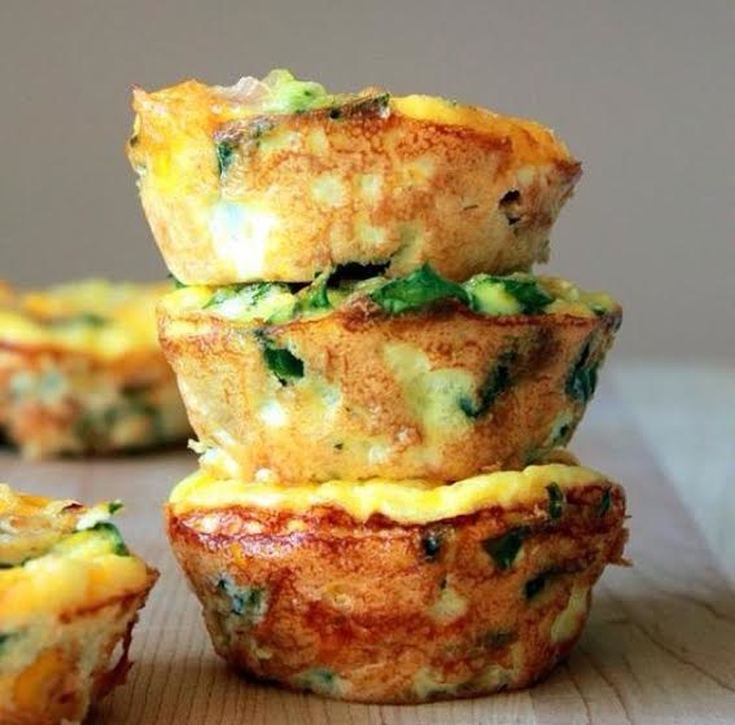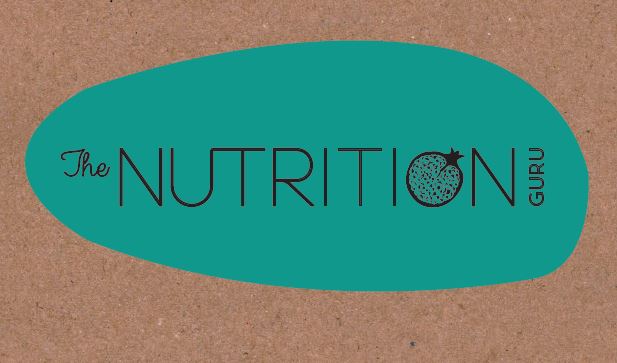The Healthy Lunchbox Lowdown
1. Mix It Up
Around a third of your child’s food intake is consumed at school, so it is incredibly important that the food in their lunch box provides optimum nutrition – the protein, fibre, vitamins and minerals they need for energy and growth. Include foods from across the different food groups to achieve this;
– Most children enjoy a roll, sandwich or some other form of carbohydrate every day. Make sure you choose a complex carbohydrate for sustained energy and leave the white, low fibre, refined alternative alone. Think wholemeal breads, rolls, tortillas, wholegrain crackers, pasta, noodles and brown or basmati rice. The addition of some lean protein (chicken, fish, meat, cheese, eggs) at lunch is a great way to keep your kiddies blood sugar levels balanced for the day, ensuring they are full and focused for the afternoon ahead.
– Dairy is packed with protein and calcium for growing bones. Healthy kids need three serves of dairy every day. According to Dairy Australia only one out of five primary school kids achieves this, and even fewer teenagers. Include some cheese in a sandwich, yoghurt as a snack or tsasiki with crackers and carrots.
Try adding super foods to the lunch box fodder – chia seeds, goji berries, quinoa and yoghurt to name a few. It’s an excellent way to help ensure their nutritional demands are being met. Quinoa boasts the highest protein content of any grain and is a great one for adding to muffin mixes. Chia seeds are packed with so much nutritional goodness you could live off them almost entirely. These amazing seeds have countless health benefits and are rich in antioxidants, protein, calcium, Vitamin C, iron, omega 3 and magnesium. Even better, they are completely flavourless. I add chia seeds to baking, home-made muesli bars, yoghurt and smoothies.
3. Brain Food = Smart Snacking
A mid-morning break with a serve of ‘brain food’ is a common occurrence in our class rooms and has been shown to improve concentration and learning. Fresh fruit, vegetables and a little protein are the perfect choice. Research shows that an amazing 43% of Australian primary school children aren’t getting the daily recommended amount of fruit and vegetables! Aim to include two serves of fresh fruits and two serves of vegetables for munching on at mid-morning, ‘brain-food’ snack time and later in the day.
4. Get on Board the Nude Food Revolution
Schools across Australia are embracing the nude food revolution and encouraging children to bring a rubbish free lunch to school. As a nation we are the second highest producer of waste per person in the western world! Unfortunately school lunches are contributing to this, with the average lunch-toting child generating around 30 kg of litter a year. You can do your bit to reduce this by packing a school lunch without including any packaging, juice packs, plastic bottles or glad wrap.
Try to avoid the temptation of purchasing any foods in a packet. Compared to fresh foods, pre-packaged food often contains more kilojoules, fat, salt and sugar. Foods to particularly be avoided include chips, sweet biscuits, muesli bars and breakfast bars along with processed meat. Avoiding those quick, pre-packaged snacks not only reduces waste at school but ensures better nutrition for your child.
7. Kids Love to Cook
Let your budding master chef join in with the shopping, meal planning and cooking. Find out what their favourite healthy foods are and plan some meals and snacks around them. Have your kids choose from a healthy selection of foods such as whole meal bread, lean protein, fruit, raw or salad vegetables, cheese, and yoghurt. Most importantly, talk to them about what makes a good food choice, you might be surprised how keen they are to eat a healthy lunch if they have made or chosen it themselves.
8. Active Kids = Hungry Kids
One sure fire way to keep children hungry and happy to eat healthy food is exercise. Limit screen time and get them moving!
Check out My Green Lunch Box for more terrific suggestions for a healthy lunch box and a great range of lunch boxes, drink bottles, sandwich wraps and back packs: www.mygreenlunchbox.com.au
MINI FRITTATAS
1 brown onion
6 organic eggs
3 tlbsp cows/almond/soy/rice milk
6 vine ripened tomatoes
Handful chopped spinach or rocket
1 tlbsp olive oil for frying
Salt and pepper to taste
Preheat oven to 175 C
Chop and then fry onions in olive oil until caramelized
Blend eggs and milk until light and fluffy in a blender
Place all ingredients together, season and divide mixture into a 6 cup muffin pan.
Bake for 20 minutes
Remove from the muffin pan and let it cool.
What a great recipe from the awesome Lee Holmes http://www.superchargedfood.com. This is one of my absolute favourites for the lunch box! They are so quick and easy to make and really tasty and nutritious. Eggs are natures little protein capsules and have almost all the essential nutrients a body needs. They also help provide Vitamin D to support your immune system and general health over the winter months. This complete protein and 'good' fats package balances blood sugar levels and helps ensure your child is focused and energised throughout the day.
It is also a great way to sneak in a couple of extra vegetables. The suggested intake of vegetables for children is 5 serves daily, by including veggies at snack or lunch it makes this goal so much more achievable and the kids won’t even be complaining either! Even better, you can make a big batch and take some to work for your lunch too.
